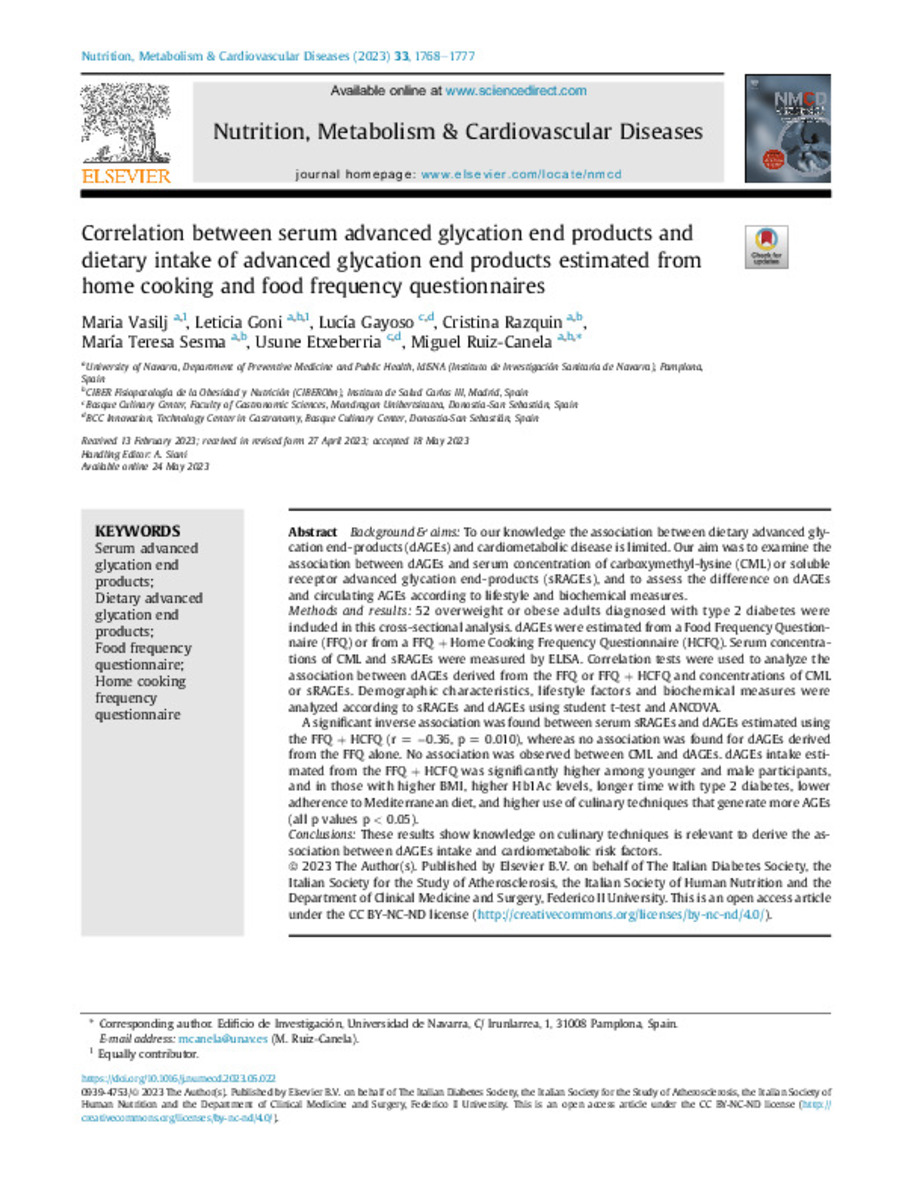Correlation between serum advanced glycation end products and dietary intake of advanced glycation end products estimated from home cooking and food frequency questionnaires
Keywords:
Serum advanced glycation end products
Dietary advanced glycation end products
Food frequency questionnaire
Home cooking frequency questionnaire
Note:
This is an open access article under the CC BY-NC-ND license
Citation:
Vasilj, M. (María); Goni, L. (Leticia); Gayoso, L. (Lucía); et al. "Correlation between serum advanced glycation end products and dietary intake of advanced glycation end products estimated from home cooking and food frequency questionnaires". Nutrition, Metabolism and Cardiovascular Diseases. 33 (9), 2023, 1768 - 1777
Statistics and impact
0 citas en

0 citas en

Items in Dadun are protected by copyright, with all rights reserved, unless otherwise indicated.








